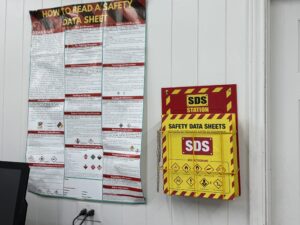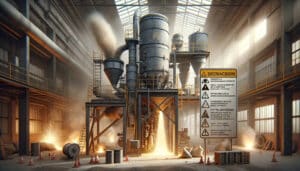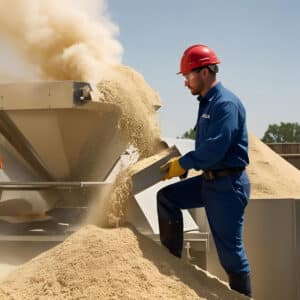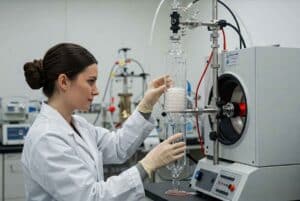We also offer
What Is Root Cause Analysis (RCA)?
Root Cause Analysis (RCA) is a structured method used to identify the underlying causes of problems or failures—not just the symptoms. In the process industry, where operations involve complex systems and safety is critical, RCA is essential for preventing recurring incidents and improving long-term performance.
RCA helps organizations investigate equipment failures, system breakdowns, quality issues, or safety incidents by analyzing what happened, why it happened, and how to prevent it from happening again.
Why Perform Root Cause Analysis?
Conducting RCA helps you:
-
Prevent recurring incidents and costly downtime
-
Improve safety and system reliability
-
Address the real causes of problems, not just surface-level symptoms
-
Enhance product quality and process efficiency
-
Maintain regulatory compliance (e.g., OSHA, EPA)
-
Support a culture of continuous improvement
By identifying systemic issues—such as human error, technical malfunctions, or organizational gaps—RCA empowers companies to implement effective, lasting solutions.
A Step-by-Step Root Cause Analysis (RCA) Process
1. Identify the Incident
Clearly define the issue or failure that needs to be investigated.
2. Assemble a Multidisciplinary Team
Bring together experts from engineering, operations, safety, and maintenance.
3. Collect Data
Gather all relevant information—such as operational logs, physical evidence, and witness accounts.
4. Construct a Timeline
Create a detailed timeline of events leading up to the incident.
5. Analyze the Data
Use RCA tools like:
-
5 Whys Analysis
-
Fishbone (Ishikawa) Diagrams
-
Failure Mode and Effects Analysis (FMEA)
6. Test Hypotheses
Validate potential root causes against your data.
7. Identify Root Causes
Pinpoint the core issues—not just individual errors but system-wide contributors.
8. Develop Corrective Actions
Create targeted solutions to eliminate or reduce the identified root causes.
9. Implement Solutions
Integrate changes into day-to-day operations.
10. Document the RCA
Record your process, findings, and actions taken.
11. Review and Monitor
Track the effectiveness of corrective actions and make adjustments as needed.
12. Train and Communicate
Ensure that all relevant staff understand the findings and how to prevent recurrence.
13. Drive Continuous Improvement
Use the RCA outcomes to support your broader safety and quality improvement goals.
Why Choose Prime Process Safety Center
Partnering with Prime Process Safety Center for your RCA offers clear advantages:
-
Specialized Expertise
Our team brings deep experience in conducting RCA across diverse process industry sectors. -
Thorough, Structured Approach
We analyze every possible contributing factor—technical, human, and organizational. -
Customized RCA Methods
We tailor each analysis to your facility’s operations, risks, and challenges. -
Proven Tools and Techniques
We use industry-standard tools like 5 Whys, Fishbone Diagrams, and FMEA. -
Actionable Solutions
Our recommendations are clear, practical, and designed to prevent future failures. -
Focus on Safety and Compliance
We help ensure adherence to industry regulations and internal standards. -
Collaborative Engagement
We work closely with your team to ensure solutions are integrated effectively. -
Training and Capacity Building
We equip your staff with RCA skills to strengthen your safety culture. -
Cost-Efficient Results
Addressing the root causes helps reduce downtime and repeated failures, saving money long-term. -
Ongoing Support
We offer continued guidance and consultation as your processes evolve.
FAQ
1. What is Root Cause Analysis (RCA)?
RCA is a systematic approach used to identify the underlying causes of problems or incidents in industrial processes, rather than just addressing the symptoms.
2. Why is RCA important in the process industry?
RCA is crucial for preventing recurring issues, enhancing safety, improving operational efficiency, and ensuring product quality in complex industrial environments.
3. How is RCA conducted in the process industry?
RCA involves defining the problem, collecting data, analyzing information to identify root causes, and then developing corrective actions to prevent recurrence.
4. What are some common RCA methods used in the process industry?
Common methods include the 5 Whys, Fishbone (Ishikawa) Diagrams, and Failure Mode and Effects Analysis (FMEA).
5. Who should be involved in an RCA?
A cross-functional team, often including process engineers, safety personnel, operators, and maintenance staff, should be involved for a comprehensive analysis.
6. How does RCA differ from troubleshooting?
Unlike troubleshooting, which focuses on quickly resolving immediate issues, RCA delves deeper to find systemic problems to prevent future occurrences.
7. Can RCA be applied to any type of problem?
Yes, RCA can be applied to a wide range of issues, from equipment failures to safety incidents and quality defects.
8. What is the outcome of an RCA?
The outcome is a set of root causes identified, along with actionable recommendations for corrective actions to prevent recurrence.
9. How often should RCA be performed?
RCA should be conducted whenever a significant problem or incident occurs, or when there’s a pattern of recurring issues.
10. How does RCA contribute to continuous improvement?
RCA helps in identifying systemic issues and opportunities for improvement, thereby contributing to the ongoing enhancement of processes and systems.















